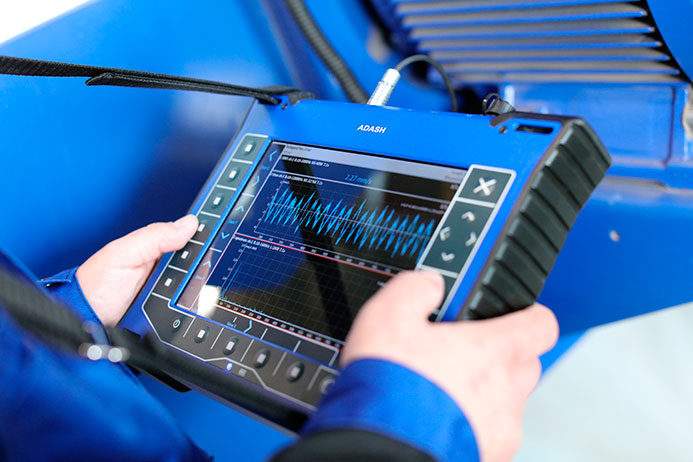
Electric motor faults and analysis
Asynchronous motors are the most commonly used type of motor. They are known for their advantages such as low purchase price, high efficiency, easy regulation and simple but robust construction.
Despite their high reliability, asynchronous motors suffer from some machine part failures. We can divide the failures of an induction motor into mechanical and electrical failures, as well as stator, rotor and bearing failures.
Let's start with the bearings faults.
All parts of the bearing are subject to degradation. The cause of bearing failure can be considered as mechanical stress during rotation and bearing currents. Mechanical stress can be caused by poor installation, poor assembly or improper use, overloading and poor maintenance. Bearing currents can be caused by shaft voltages (due to asymmetrical circuits or power supplies) and capacitive currents (caused by the pulse frequency of the power supply control of semiconductor converters).
All mechanical (and some electrical) motor faults have a unique signature in the vibration spectrum of the machine and can be detected by vibration analysis. Failures such as misalignment, looseness, imbalance and bearing failures are diagnosed using the same rules that apply to all other machine parts.
How do we analyze mechanical faults? The answer can be found in our video How to become an expert in Vibration Analysis and our other tutorial videos.
What is vibration analysis? Our series of Vibration analysis for beginners videos or our series of Vibration Analysis articles will help you to understand this topic.
Some electrical faults can also be detected in the vibration spectrum. You should measure the motor with and without power supply to find them. Some vibration signatures may disappear when the power is off - those with an electrical origin. You can also focus on the exact frequency of peaks in the spectrum. If you find a peak at the exact frequency of your power supply (e.g. 50Hz and more often at its harmonic frequencies), it's probably an electrical problem, because there's always some slip in a loaded electric motor and the motor isn't running at its exact rotational frequency.
Electrical (and some mechanical) motor faults have a unique signature in the frequency spectrum of the motor current. The MCSA method can detect them. MCSA stands for Motor Current Signature Analysis.
Electric motors generate excessive sidebands that distort the frequency spectrum. Each fault then has its own specific signature. Individual faults can be distinguished from each other by their amplitude bands and frequency or other signatures.
This method is based on the measurement of the stator current of one or more phases in the time domain and its subsequent spectral analysis.
Stator faults
Stator winding faults cause the majority of problems in stators. Broken winding insulation is the most common stator fault. MCSA can detect broken insulation between turns, which can lead to broken insulation between phases, which is fatal to the motor. Thermal stress has the greatest effect on the life and quality of the insulation. Another undesirable effect is the electrical stress of the transient voltage. With the increasing use of soft start inverters, square wave voltage pulses are modulated at the output of the inverter.
Rotor faults
The rotor of an asynchronous motor consists of a shaft, insulated sheets pressed onto the shaft to form the magnetic circuit of the rotor, and windings. In most cases, the rotor winding consists of a cage structure formed by bars connected at the ends.
Rotor eccentricity (meaning the unevenness of the air gap between the rotor and the stator) and rotor bar interruption are the most common faults. These faults can be caused by the use of poor quality materials, overloading or heavy starts. In the case of rotor bars, the fault may increase the resistance of the bar or completely break the bar circuit. Rotor bar failures result mainly in engine starting deterioration and generating parasitic moments. In addition, the broken bar will cause additional faults in other bars because the current in them will be greater due to the missing bar current path (where one bar is broken).
The ADASH VA5 Pro vibration analyser offers the unique ability to analyse vibration and current in one device. In addition, the MCSA module extends the analyser's capabilities and allows you to analyse the current signature from the spectrum - based on your knowledge and experience, or you can use the automatic detection function. This is similar to the ADASH automatic Fault Source Identification Tool (FASIT) for vibration analysis. The VA5 vibration analyzer can automatically detect the main causes of faults such as unbalance, looseness, misalignment and bearing faults. The VA5 Pro's MCSA module can automatically identify rotor and stator faults, eccentricity, broken rotor bars and power quality.


